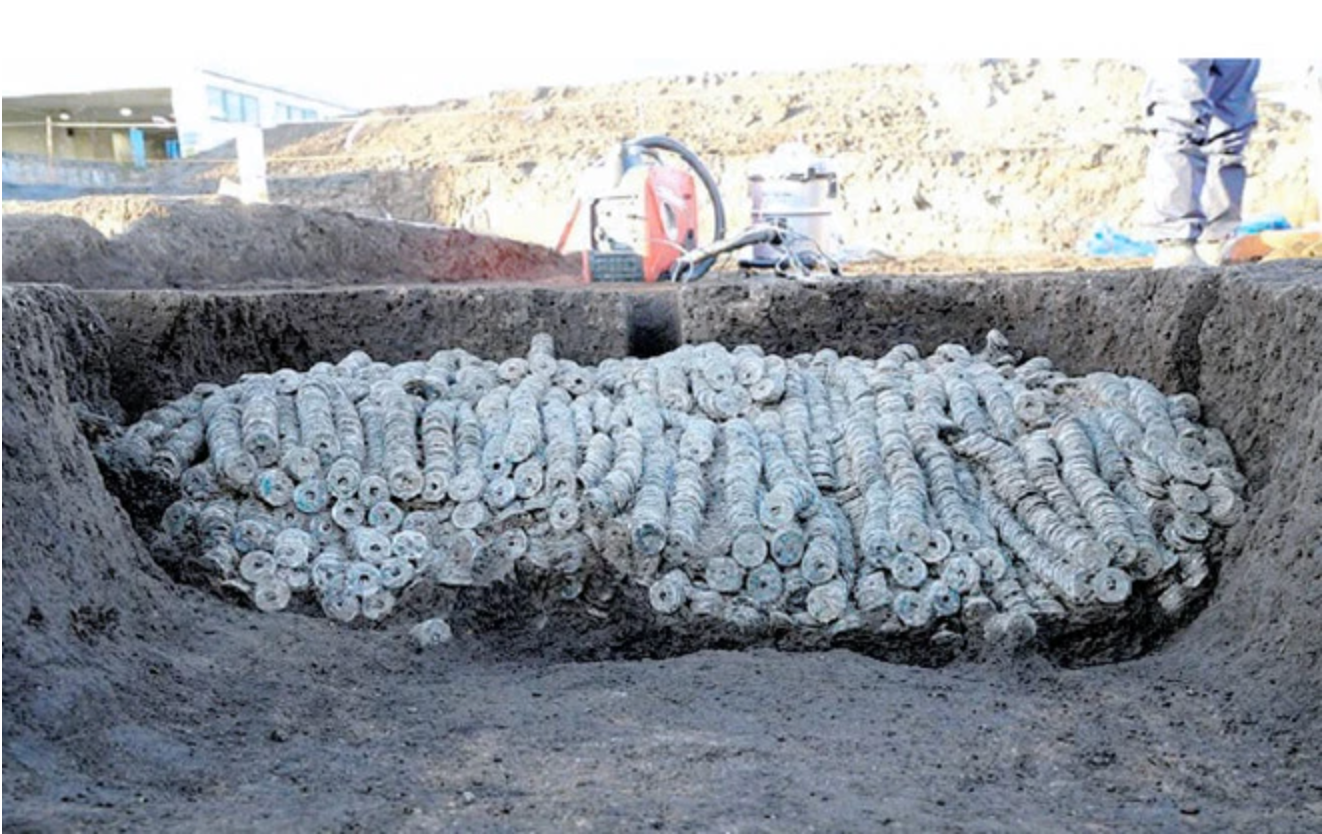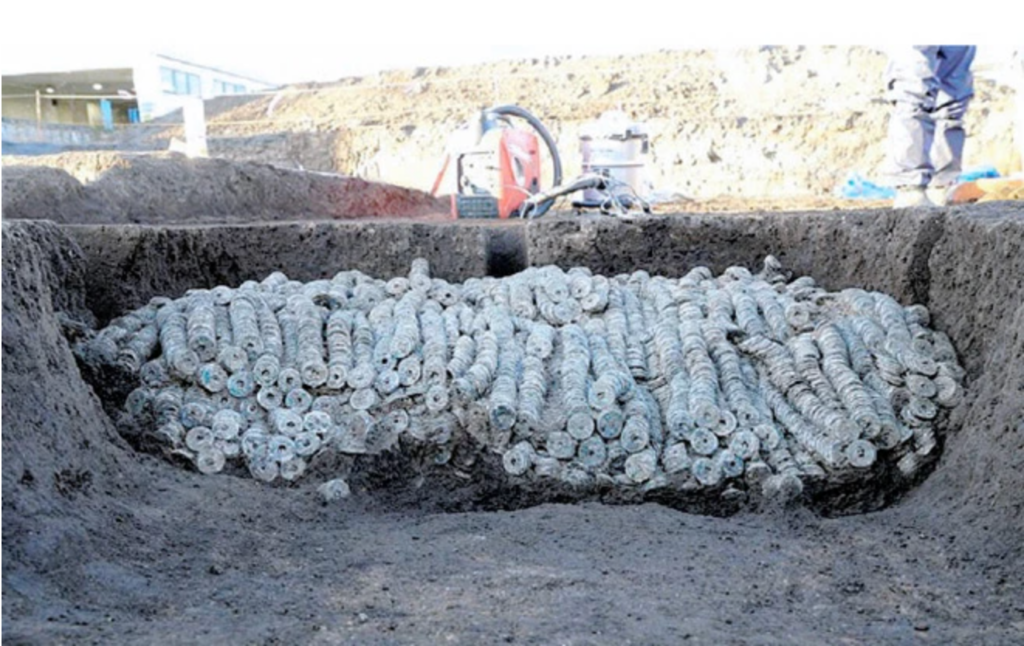
A hoard of 100,000 ancient coins were found at a building site in Maebashi, Gunma Prefecture, in central Japan on November 3rd, according to the national newspaper Asahi Shimbun.
A company was planning to build a factory in the area where the coins were located. Bundled with straw rope, archaeologists found 1,060 bundles of coins containing 100 pieces each in an area measuring roughly two feet high by three feet wide.
Some of the coins date back to the Chinese Empire more than 2,000 years ago. The teams examined 334 coins and discovered that the coins date back to at least 44 different years.
The oldest coin identified thus far is an engraved Ban Liang bronze coin with a hole in its center dating back to 175 BCE. The most recent coin, by contrast, dates to 1256 CE. That coin is thought to to have been buried that same year, during the Kamakura period (1185–1333).
Additionally, a number of other relics were found at the excavation site. Experts think the site may have once been a central part of Kozuke province, which proceeded Guman Prefecture between the late 3rd to late 7th centuries.
It is believed the coins were hastily buried for safekeeping, as they’re located near previously large residences of notable people who were present at a time when war was brewing.

